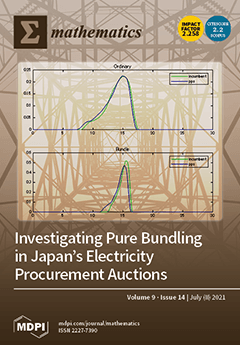A classical reduced order model (ROM) for dynamical problems typically involves only the spatial reduction of a given problem. Recently, a novel space–time ROM for linear dynamical problems has been developed [Choi et al., Space–tume reduced order model for large-scale linear dynamical systems
[...] Read more.
A classical reduced order model (ROM) for dynamical problems typically involves only the spatial reduction of a given problem. Recently, a novel space–time ROM for linear dynamical problems has been developed [Choi et al., Space–tume reduced order model for large-scale linear dynamical systems with application to Boltzmann transport problems,
Journal of Computational Physics, 2020], which further reduces the problem size by introducing a temporal reduction in addition to a spatial reduction without much loss in accuracy. The authors show an order of a thousand speed-up with a relative error of less than
for a large-scale Boltzmann transport problem. In this work, we present for the first time the derivation of the space–time least-squares Petrov–Galerkin (LSPG) projection for linear dynamical systems and its corresponding block structures. Utilizing these block structures, we demonstrate the ease of construction of the space–time ROM method with two model problems: 2D diffusion and 2D convection diffusion, with and without a linear source term. For each problem, we demonstrate the entire process of generating the full order model (FOM) data, constructing the space–time ROM, and predicting the reduced-order solutions, all in less than 120 lines of Python code. We compare our LSPG method with the traditional Galerkin method and show that the space–time ROMs can achieve
to
relative errors for these problems. Depending on parameter–separability, online speed-ups may or may not be achieved. For the FOMs with parameter–separability, the space–time ROMs can achieve
online speed-ups. Finally, we present an error analysis for the space–time LSPG projection and derive an error bound, which shows an improvement compared to traditional spatial Galerkin ROM methods.
Full article


